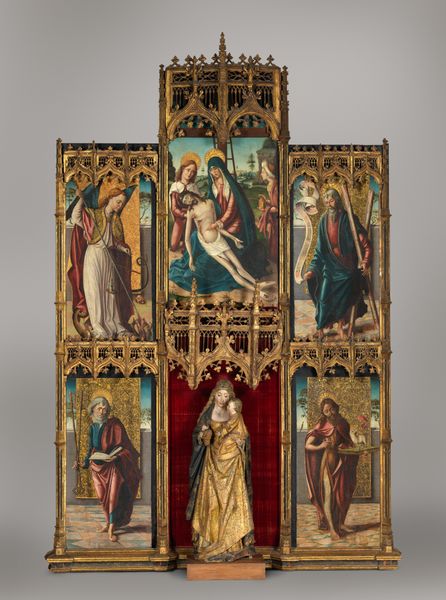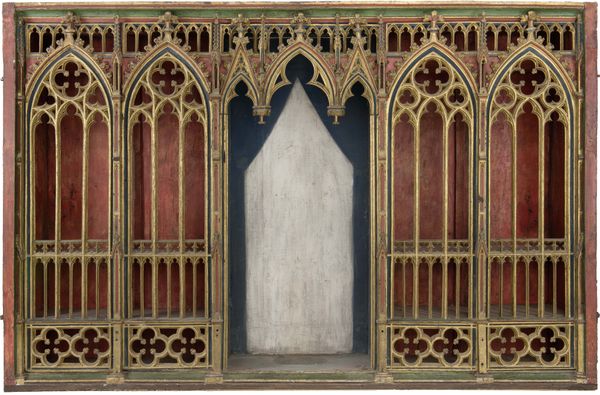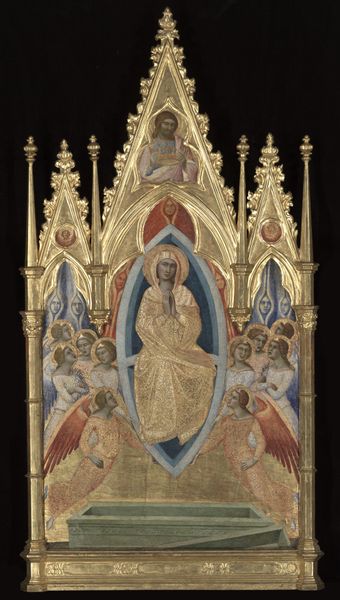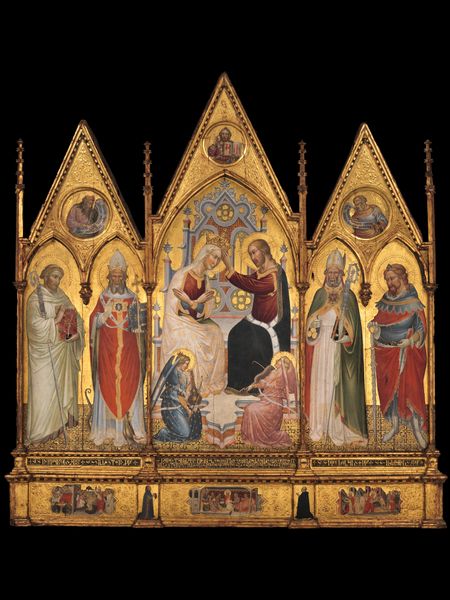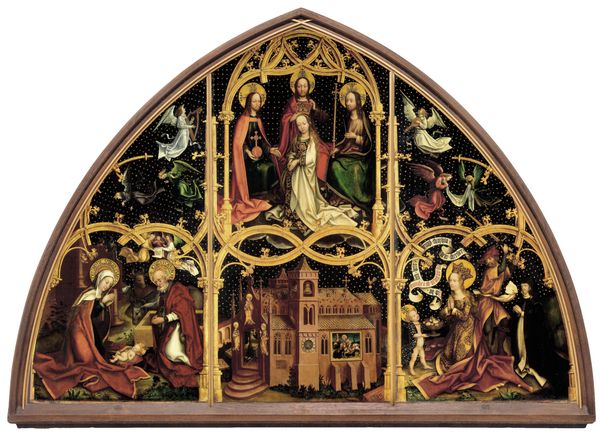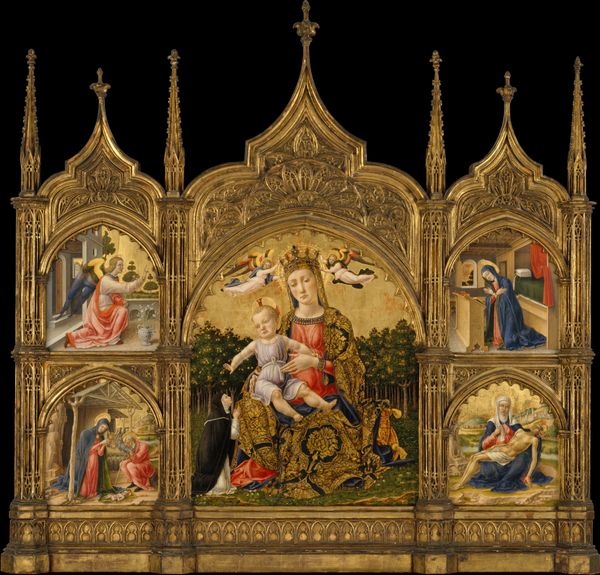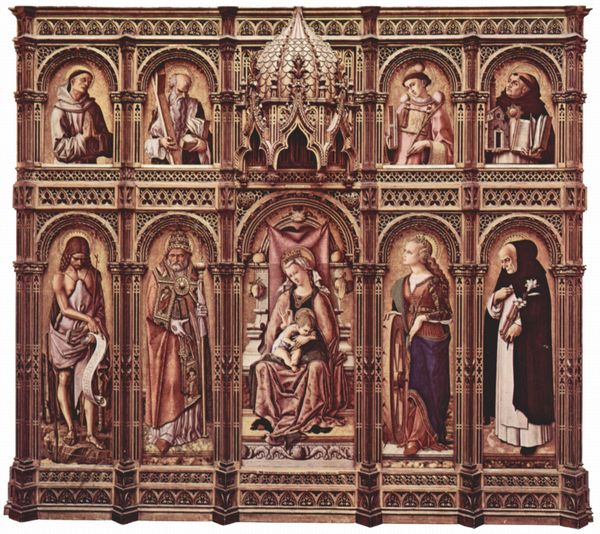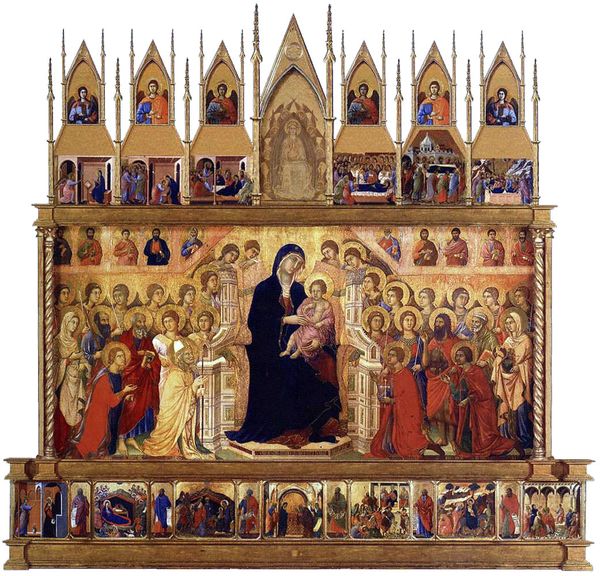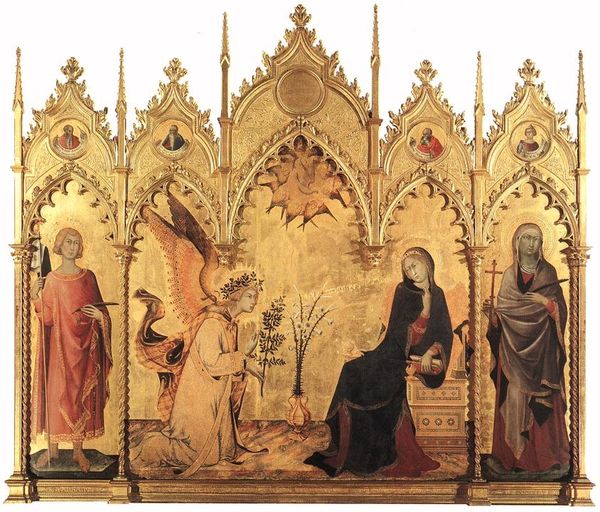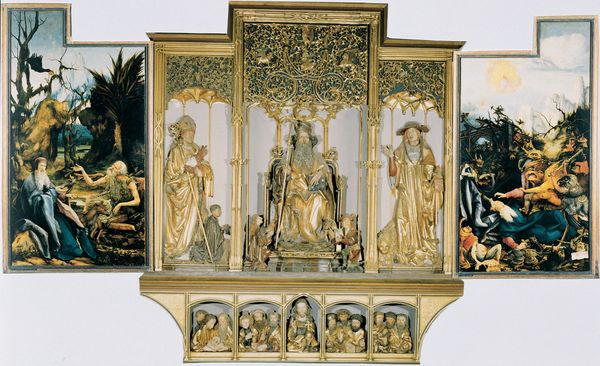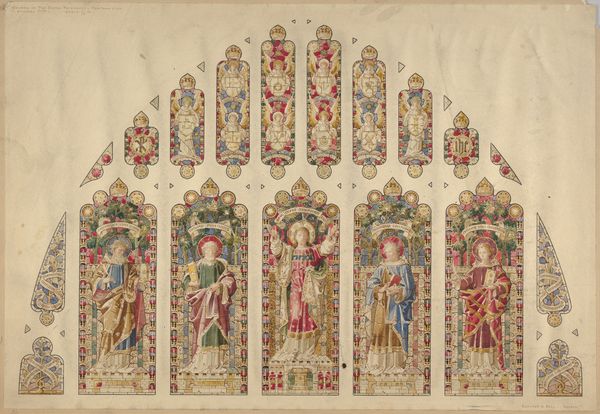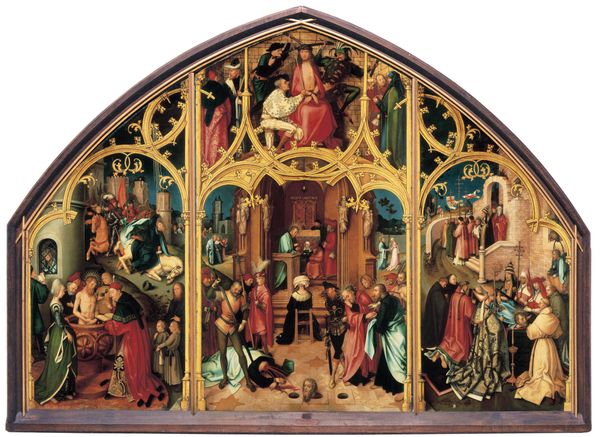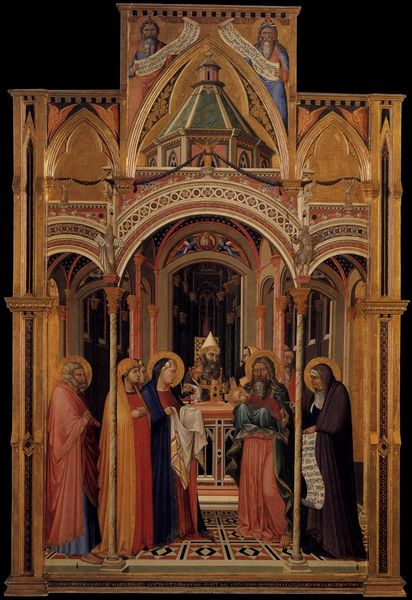
tempera, painting
#
medieval
#
narrative-art
#
tempera
#
painting
#
gothic
#
stain glass
#
figuration
#
jesus-christ
#
italian-renaissance
#
stained glass
#
miniature
#
historical building
#
angel
Copyright: Old Masters 1300 - 1800
Editor: Here we have "The Wings of the Altenberg Altarpiece," made around 1330 with tempera. The whole piece has such a captivating story-book quality, like an illuminated manuscript brought to life. What narratives do you find embedded in this altarpiece? Curator: The altarpiece acts as a window into the social and religious beliefs of its time. Altarpieces such as this played a crucial public role; they visually communicated biblical stories and moral lessons to a largely illiterate population. How does its compartmentalized nature influence your understanding of each depicted moment? Editor: It’s almost like a graphic novel panel, leading my eye from one scene to the next! But do you think that the stylized portrayal affects the audience's interpretation, or do you think it only served its time? Curator: Its formal qualities shaped its accessibility; the emphasis was less on naturalistic representation and more on conveying symbolic meaning. Colors, composition, and figures – they were carefully arranged to trigger spiritual understanding within the audience. How else do you think location and socio-political power might come into play? Editor: Knowing where this would have originally been placed gives me more context. Were the panels arranged in a particular order to create a certain narrative flow? Curator: Most likely. And beyond the arrangement, consider how altarpieces became integral parts of religious ceremony. They were not passive objects; instead they played an active role in structuring the religious experience and fostering specific beliefs among the congregation. How might these images function in rituals and ceremonies? Editor: It makes me realize I often forget about the important socio-cultural function of these objects; they’re much more than just art! Thank you for shedding light on the politics behind it. Curator: Exactly. Considering art's broader public function allows us to engage with these works more thoroughly, giving depth to their social contexts.
Comments
stadelmuseum about 2 years ago
⋮
The wings of the retable from Altenberg, near Wetzlar, flanked a section featuring at its centre a sculpture of the Madonna, the convent’s main patron saint. It is to her that the Three Wise Men on the left wing are kneeling in adoration. The scenes from the life of the Virgin are joined by depictions of the archangel Michael and St Elizabeth of Thuringia, whose daughter Gertrude was the abbess at Altenberg for many years. The elegant two-dimensionality of the robed figures with their slender limbs is typical of the early fourteenth-century High Gothic style.
Join the conversation
Join millions of artists and users on Artera today and experience the ultimate creative platform.
